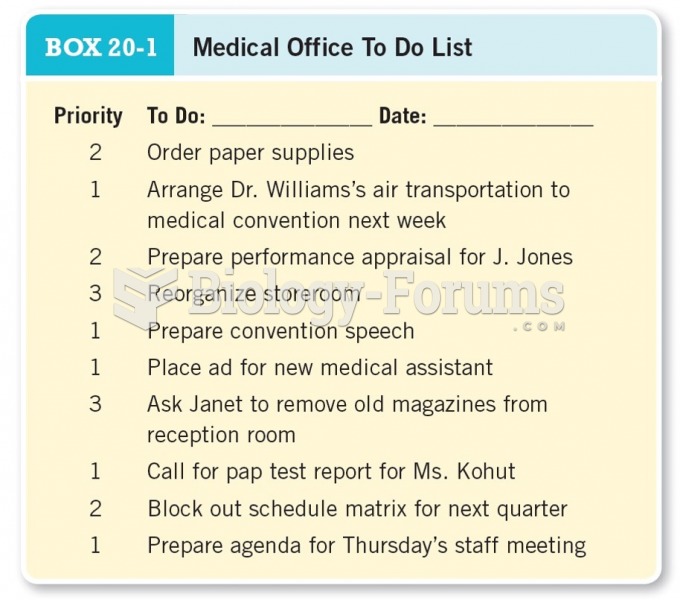Answer to Question 1
The steps involved in a civil trial beginning with jury selection are:
Jury selectionThe jury selection process is called voir dire. During this process, attorneys for both sides question individual jurors or groups of jurors to determine if bias exists or if, for other reasons, certain jurors should not be included on the jury. Attorneys may exclude persons in the jury pool from sitting on the jury through challenges for cause or a limited number of peremptory challenges.
Opening statementsThe trial begins with opening statements in which both attorneys briefly give their versions of the facts of the case and evidence supporting their views.
Plaintiff's attorney presents evidenceThe plaintiff's attorney presents evidence supporting the plaintiff's claim, including the testimony of witnesses. The plaintiff's attorney's questioning of the witnesses that she calls is referred to as direct examination. The defendant's attorney may then cross-examine the witness, after which the plaintiff's attorney may question the witness on redirect exam. Redirect exam is followed by recross-exam by the defendant's attorney.
Defense attorney's motionAfter the plaintiff's attorney has presented her client's case, the defendant's attorney may make a motion for a directed verdict, also called a motion for judgment as a matter of law in federal courts. This motion asserts that the plaintiff has not offered enough evidence to support the validity of the plaintiff's claim against the defendant. If the judge grants the motion, the case will be dismissed.
Defendant's attorney presents evidenceThe defendant's attorney presents evidence and testimony of witnesses to refute the plaintiff's claims. Any witnesses called to the stand by the defendant's attorney will be subject to direct exam, cross-exam, and possibly redirect exam and recross-exam.
Closing argumentsAfter the defendant's attorney has finished his presentation, both attorneys give their closing arguments. The attorneys summarize the major points that they made during the trial and attempt to show how the evidence presented favors a verdict for their clients.
Jury instructionsFollowi ng the attorneys' closing arguments, the judge instructs the jury using a charge (or jury instructions). The charge is a document that includes statements of the applicable law and a review of the facts as they were presented during the trial. Because the jury's role is to serve as the fact finder, the factual account contained in the charge is not binding on the jurors. Indeed, they may disregard the facts as noted in the charge. They are not free to ignore the statements of law, however. The jury then begins its deliberations.
VerdictWhen the jury has reached a decision, it issues a verdict, or decision, in favor of one party or the other.
Posttrial motionAfter the verdict has been pronounced and the trial has concluded, the losing party's attorney may file a motion for a judgment notwithstanding the verdict. This motion requests that the judge enter a judgment in favor of the losing party in spite of the verdict, because the verdict was not supported by the evidence or was erroneous for some other reason. In conjunction with the motion (or as an alternative to it), the attorney may also file a motion for a new trial, asserting that the trial was so flawed by judge or juror misconduct or other pervasive errors that a new trial should be held.
Enforcing the judgmentThis is the stage at which the plaintiff collects the money to which it is entitled from the defendant. If the defendant did not have the money available to pay the damages, then the plaintiff's attorney would go back to court and request the court to issue a writ of executionan order issued by the clerk of the court directing the sheriff to seize and sell the defendant's assets. The proceeds of the sale would then be used to pay the damages owed to the plaintiff. Any excess proceeds would be returned to the defendant.
Answer to Question 2
The posttrial motions that are available include:
Motion for judgment notwithstanding the verdictThis motion requests that the court grant judgment in favor of the party making the motion on the ground that the jury verdict against him was unreasonable or erroneous. A prerequisite to a motion for a judgment notwithstanding the verdict is that a directed verdict motion must have been made and denied during trial. This motion may be made if an attorney believes that a verdict rendered against her client is not supported by the evidence. (In the federal courts, this motion is called a motion for judgment as a matter of law.)
Motion for a new trialThis is a motion asserting that the trial was so fundamentally flawed (because of error, newly discovered evidence, prejudice, or other reason) that a new trial is needed to prevent a miscarriage of justice. Because such a motion reflects adversely on the way in which the judge conducted the trial, it should be filed only if the attorney truly believes that a miscarriage of justice will otherwise result. For a motion for a new trial to have a reasonable chance of being granted, the motion must allege such serious problems as jury misconduct, prejudicial jury instructions, excessive or inadequate damages, or the existence of newly discovered evidence.







